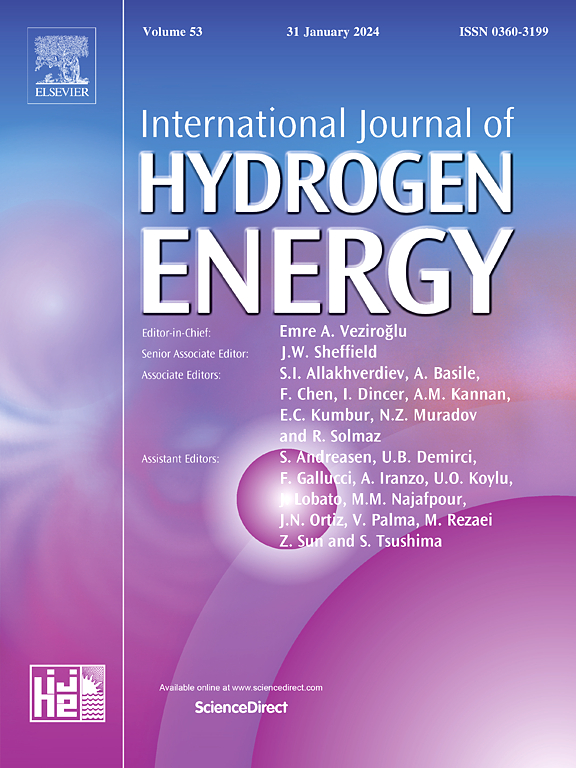Identification nonmetal doping induced S vacancy to active MoS2 for hydrogen evolution reaction via structural descriptor
IF 8.3
2区 工程技术
Q1 CHEMISTRY, PHYSICAL
引用次数: 0
Abstract
The efficient screening of catalysts is hindered by trial-and-error experimental methods. Therefore, we have developed a method based on structural descriptors, which only utilizes the physical and chemical properties and structural features documented in manuals to identify the catalytic activity of the catalyst, eliminating the need for additional calculations to accelerate catalyst development. Based on our previous research, structural descriptors for the same active site in different catalytic environments are still lacking, yet they are crucial for efficient catalyst development. By using density functional theory and microkinetic methods, we discovered that generating sulfur vacancies is an effective method to activate the hydrogen evolution performance of inert MoS2 substrates. For TeSv-MoS2 the hydrogen Gibbs free energy is only −0.05 eV and the predicted overpotentials decrease to 91 mV at 10 mA cm−2, which is lower than other MoS2 systems. Among them, S-vacancy defect sites resulting from non-metallic (X) doping in the XSv-MoS2 system play a pivotal role. Taking into account the distance effect, the structural descriptors related to electron affinity are employed to describe the geometric structure and physicochemical properties of vacancies and their next-nearest neighbor sites to accelerate the screening of MoS2-based catalysts.
通过结构描述符识别非金属掺杂诱导的活性二硫化钼的S空位进行析氢反应
催化剂的有效筛选受到反复试验的实验方法的阻碍。因此,我们开发了一种基于结构描述符的方法,该方法仅利用手册中记录的物理和化学性质以及结构特征来识别催化剂的催化活性,从而无需额外的计算来加速催化剂的开发。基于我们之前的研究,对于不同催化环境下相同活性位点的结构描述符仍然缺乏,但它们对于高效的催化剂开发至关重要。利用密度泛函理论和微动力学方法,我们发现产生硫空位是激活惰性二硫化钼基板析氢性能的有效方法。对于TeSv-MoS2,氢的吉布斯自由能仅为- 0.05 eV,预测过电位在10 mA cm−2时降至91 mV,低于其他MoS2体系。其中,非金属(X)掺杂在XSv-MoS2体系中产生的s -空位缺陷位点起着关键作用。考虑到距离效应,利用与电子亲和相关的结构描述符来描述空位及其次近邻的几何结构和物理化学性质,以加速mos2基催化剂的筛选。
本文章由计算机程序翻译,如有差异,请以英文原文为准。
求助全文
约1分钟内获得全文
求助全文
来源期刊

International Journal of Hydrogen Energy
工程技术-环境科学
CiteScore
13.50
自引率
25.00%
发文量
3502
审稿时长
60 days
期刊介绍:
The objective of the International Journal of Hydrogen Energy is to facilitate the exchange of new ideas, technological advancements, and research findings in the field of Hydrogen Energy among scientists and engineers worldwide. This journal showcases original research, both analytical and experimental, covering various aspects of Hydrogen Energy. These include production, storage, transmission, utilization, enabling technologies, environmental impact, economic considerations, and global perspectives on hydrogen and its carriers such as NH3, CH4, alcohols, etc.
The utilization aspect encompasses various methods such as thermochemical (combustion), photochemical, electrochemical (fuel cells), and nuclear conversion of hydrogen, hydrogen isotopes, and hydrogen carriers into thermal, mechanical, and electrical energies. The applications of these energies can be found in transportation (including aerospace), industrial, commercial, and residential sectors.
 求助内容:
求助内容: 应助结果提醒方式:
应助结果提醒方式:


